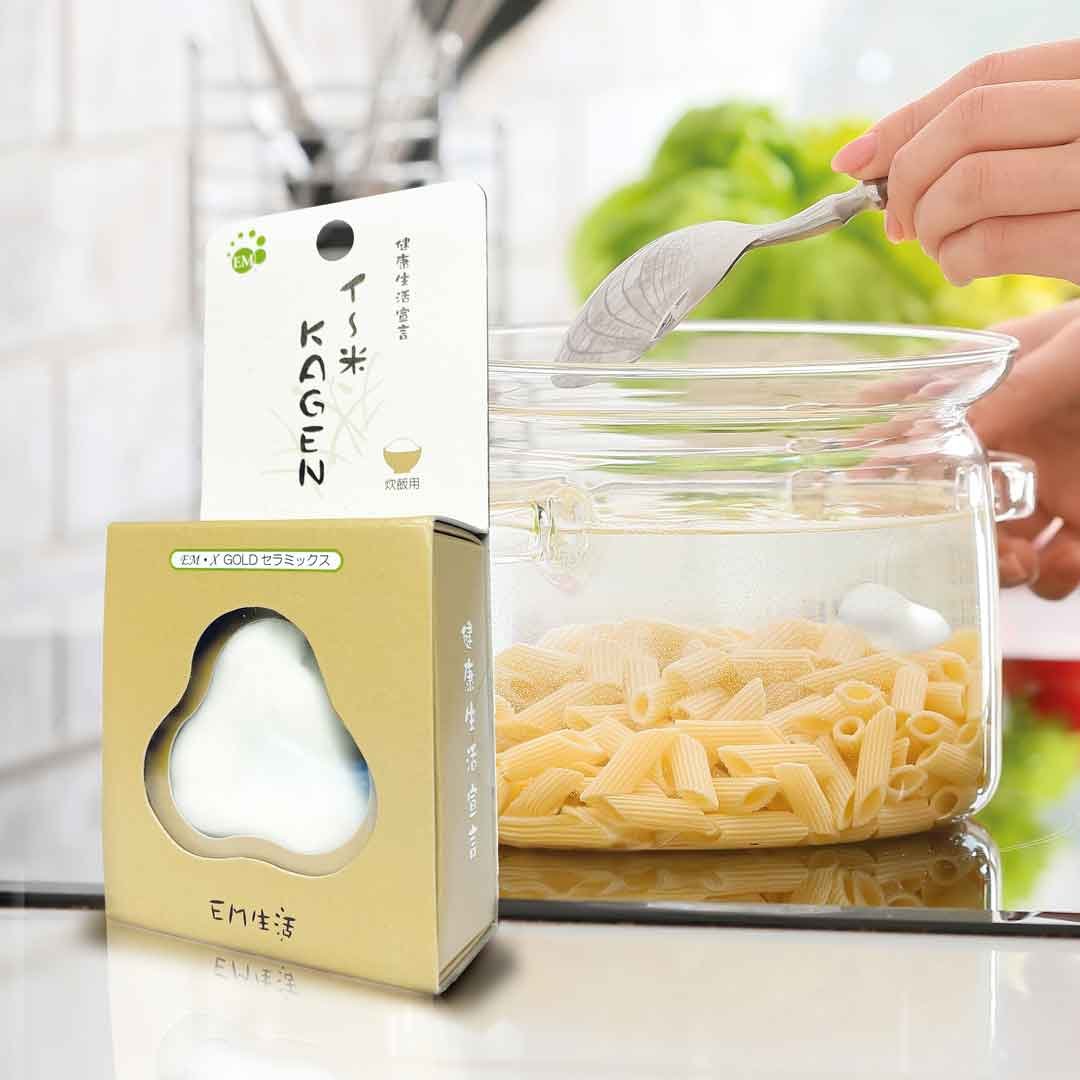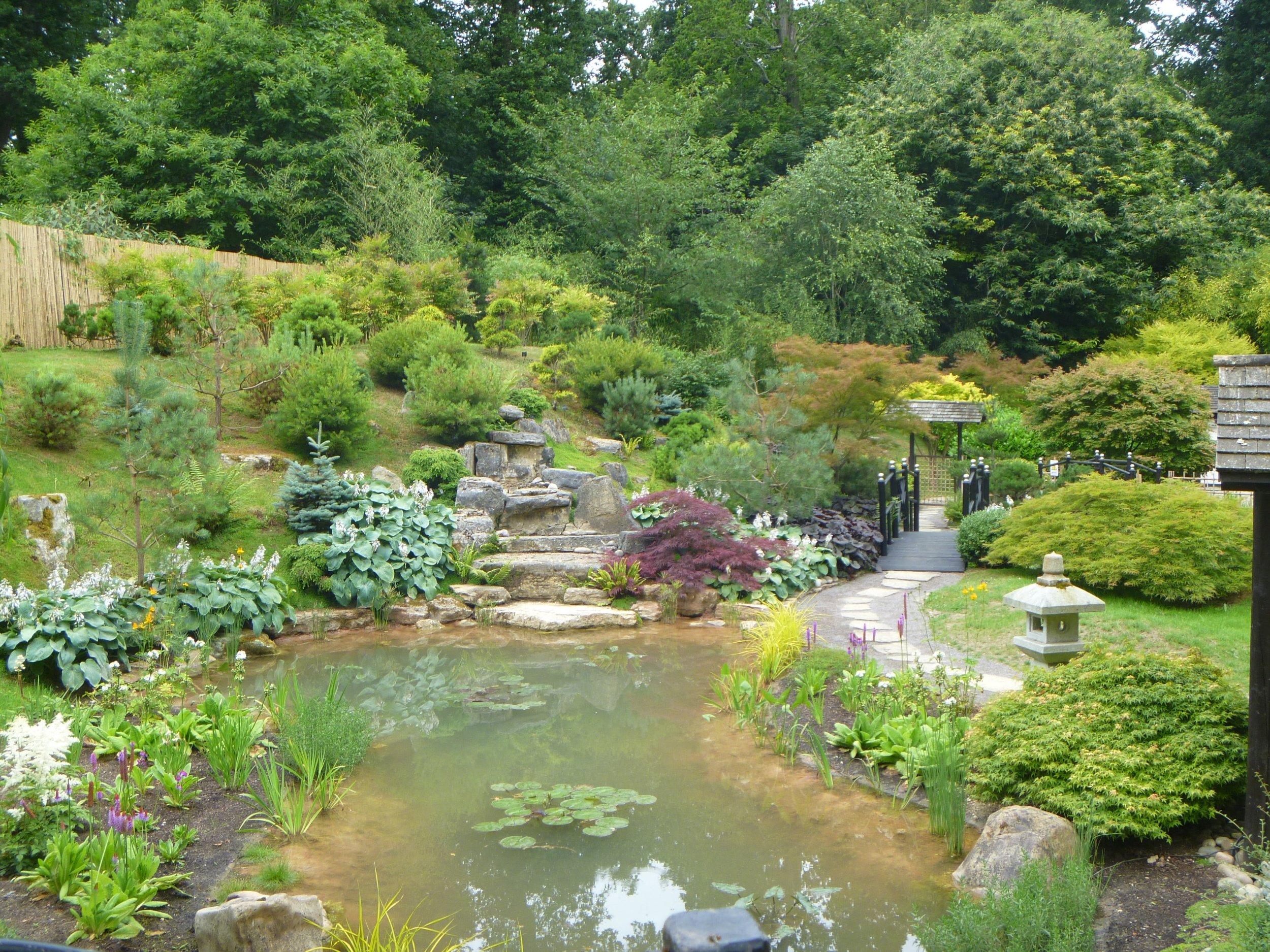
EM CERAMICS

Unique properties
Functioning as a natural filter, ceramic beads exhibit remarkable durability and efficiency, presenting a significant opportunity for substantial savings. Contribute to the reduction of plastic waste by eliminating the need for plastic water bottles and embracing tap water. Crafted from clay fermented by activated micro-organisms, these beads influence the water's structure, gaining recognition for markedly enhancing tap water's taste. Beyond this, they serve various purposes, including:
Preventing limescale accumulation in jugs, kettles, washing machines, dishwashers, and toilets.
Enhancing the cleaning and rinsing effectiveness of water.
Prolonging the freshness of fruits and vegetables by inhibiting rot.
Grey ceramic beads maintain their efficacy for over 10 years, while pink beads offer approximately 6 months of effectiveness. Though their uses differ slightly, both types contribute to significant savings and are entirely biodegradable and compostable.
Embark on a transformative journey toward eco-conscious living with Ceramic Beads, a sustainable and zero-waste solution that transcends mere hydration, reshaping your entire lifestyle. Hailing from Japan and championed by Agriton for nearly two decades, these beads redefine not only your water consumption habits but your entire relationship with this precious resource. Crafted from clay fired at temperatures ranging from 800°C to 1200°C, Ceramic Beads, also known as "EM" or Effective microorganisms, embody the perfect union of ancient material science and state-of-the-art technology.
Delving into the intricacies of EM Ceramic Beads is crucial. These small clay tubes encapsulate beneficial micro-organisms found in nature, serving as conduits for the diffusion of EM information. Developed by Japanese Professor Teruo Higa, this process, relying on magnetic resonance, imparts regenerative and antioxidant properties to the beads. Their exceptional ability to eliminate harmful information from water through ion exchange and long-wave infrared radiation distinguishes them. The end result is water restored to its original, pristine state.
The versatility of Ceramic Beads extends beyond water treatment, actively contributing to cleaner air, soil, and water. The micro-organisms within play a pivotal role in ecological cycles, benefiting plants, animals, and humans alike. This holistic approach to sustainability positions Ceramic Beads as catalysts for a balanced and resilient ecosystem, far beyond their role as a water treatment solution.
The advantages of integrating Ceramic Beads into your lifestyle are manifold. Not only do they enhance the taste and quality of tap water, providing a cost-effective and enjoyable alternative to bottled water, but they also boast exceptional durability. With a lifespan exceeding 10 years for grey beads, they represent a long-term investment in both personal well-being and the health of the planet. Additionally, their compostable nature aligns seamlessly with eco-friendly practices, contributing to a circular and sustainable economy.
Agriton underscores transparency in the distribution of Ceramic Beads, dispelling any misconceptions about their origin. Proudly crafted in Japan, where the EM technology originated, independent French laboratories vouch for their safety, affirming their absence of radioactivity. Being an informed consumer ensures that your choices align with your values.
Grey and pink variations cater to diverse needs. While grey beads act as mechanical filters, enhancing the molecular structure of water, pink beads, due to their porous nature, exhibit adsorption properties. The interplay between grey and pink beads, when used together, results in a synergy that amplifies their overall effectiveness.
Applications of Ceramic Beads are vast, ranging from carafes and household appliances to bathtubs, vases, and even pet collars. Dosage recommendations provide flexibility based on preferences and intended use. Whether improving the quality of tap water, reducing limescale deposits in appliances, or fostering healthier plants, Ceramic Beads adapt seamlessly to your needs.
As you contemplate the ecological impact of your choices, Ceramic Beads emerge as beacons of sustainability. Available in bulk and retail, they empower you to make a tangible difference in the fight against plastic pollution while embracing a lifestyle that nurtures both you and the environment. Choose the path of sustainability – choose Ceramic Beads for a future where every drop counts.

How do EM Ceramics work?
Delve into the transformative capabilities of ceramic beads, a marvel born from EM technology pioneered by Japanese Professor Teruo Higa. Professor Higa emphasizes the regenerative and antioxidant power of EM ceramic beads, harnessed through magnetic resonance. These beads play a pivotal role in water purification by eliminating harmful information. Leveraging ceramic properties, they induce ion exchange and long-wave infrared radiation, erasing water molecules' transmitted information and restoring a pristine state. Beyond purification, ceramic beads act preventively and curatively against oxidation. As carriers of EM information within their fired clay, each bead facilitates diffusion, fostering a harmonious interaction with surrounding substances. Experience the synergy of technology and nature with EM ceramic beads.
Unique properties
When the clay is fermented with Effective Micro-organisms (EM®) and EM®-X Gold and then heated, the structure of the clay becomes ceramic. Effective Micro-organisms (EM®) do not survive such high temperatures; however, this process does something unique; It stores the harmonising capabilities of EM® within the ceramic as Far-Infrared vibrations.
Far-infrared (FIR) is a type of electromagnetic radiation that can have positive effects on human health
These EM®-activated ceramics then directly influence and create order in their surrounding environment at a molecular level. Water, for instance, is made softer when molecular clusters are broken down and restructured by the emitted vibrations. These same wave formations create a living space for microbiology supporting seed germination and plant growth when added to the soil.
Like music, vibrational waves create order, harmony, and formation, benefiting all life aspects, as nature intended.
Just some of the benefits
• Grey EM® Ceramics change the structure and taste of water by reducing water clustering.
• Ceramics emit Far-Infrared vibrations that improve blood and oxygen circulation in the body, which is mostly made of water.
• Oxidation and scale deposits are greatly reduced by EM® Ceramics.
• Adding EM® Ceramics in powder form to building materials reduces formaldehyde emissions, speeds up drying, and increases resistance.
• Pink EM® Ceramics have a porous texture that adsorbs molecules, allowing for faster chlorine elimination and limiting algae growth.
• Adding EM® Ceramics to soil provides a living space for microbiology, promoting seed germination and plant growth.
• EM® Ceramics in powder form and diluted in water can create a physical barrier on plant leaves, protecting against pathogens.
• Adding EM® Ceramics in powder form to paint reduces odours and toxicity. Mixing EM® Ceramics with concrete and cement prevents oxidation.

Experience improved health with
EM ceramics

Where are the ceramic beads made?
Ceramic beads originate from the birthplace of EM technology in Japan, a fact transparently communicated by Agriton. Amidst the market noise, some retailers may inadvertently mislead consumers by emphasizing their UK company or brand, fostering misconceptions about the beads' origin. To discern the authenticity, pay heed to websites lacking explicit mention of the Japanese origin, often accompanied by a discreet "Authorized reseller" label. Such entities serve as intermediaries, reselling a Japanese product rather than manufacturing it. Vigilance is paramount, as Agriton clarifies that the entire process stems from the expertise of Japanese Professor Teruo Higa. Relying on his extensive experience as both a user and retailer, Agriton debunks any assertions of ceramic beads being manufactured in the UK, emphasizing the prevalence of counterfeit claims around successful products.
What is the benefit of ceramic beads
Embrace the ecological advantages embedded in ceramic beads, aligning seamlessly with cost savings. These beads actively promote the consumption of tap water, a readily available and economical choice. While tap water in Great Britian is both potable and of high quality, its taste can deter individuals. Ceramic beads act as a remedy, enhancing water quality and flavour without incurring additional costs. The remarkable durability of grey ceramic beads, surpassing 10 years, translates into a cost-effective investment. Bid farewell to plastic water bottles, fostering substantial savings and championing a meaningful contribution to combat plastic pollution. Moreover, these 100% natural ceramic beads, boasting an exceptional lifespan, can be seamlessly composted, promoting sustainability by integrating them directly into the soil or compost.

How do I care for ceramic Pipes?
Maintaining ceramic beads is straightforward and undemanding. While not obligatory, Agriton suggests enhancing their effectiveness by putting them outside in direct sunlight for up to 1 hour. This practice can be performed approximately once a month or when you observe a diminishing effect from the ceramic pipes.

Why use ceramic Pipes in household appliances?
Are you familiar with limescale and its detrimental effects? Limescale deposits form due to the presence of minerals in tap water, varying in concentration depending on the region.
When limescale accumulates in the pipes of household appliances or on electrical resistances, it poses several issues. It not only obstructs and hinders the flow but also amplifies electricity consumption, diminishing the efficacy of detergents and laundry powder. The aftermath includes the appearance of white marks or coarser laundry, often leading to compensatory measures with additional detergents.
EM ceramic beads play a pivotal role in significantly reducing limescale deposits by influencing water molecules. The positive outcomes are promptly noticeable, especially in appliances like coffee pots and kettles. This beneficial process extends to washing machines and dishwashers, resulting in time, energy, and cleaning product savings.

is the effectiveness of ceramic beads scientifically proven
Undoubtedly, the efficacy of EM ceramic beads is substantiated by scientific studies primarily documented in Japanese (Professor Teruo Higa's native language) and English. The technical nature of these studies, compounded by the linguistic barrier, contributes to the limited awareness of Professor Higa's work in France, leading to some scepticism.
Whether universally embraced or not, the tangible impact of ceramic beads on molecules becomes evident through practical use, accounting for their popularity among those who have experienced their benefits.
It's a reality that empirical observations sometimes overshadow theoretical explanations. While science rigorously explores and skilfully elucidates various phenomena, it acknowledges certain simple yet unexplained occurrences, such as the "open-air factor." This factor, emphasizing the impact of open air on pathogen destruction, underlines the importance of regularly ventilating homes with outdoor air. Natural elements like sunlight and open air serve as potent disinfectants, influencing our well-being and mood.
Individual perspectives differ—one can either stay indoors and await a full comprehension of reality or venture outside to reap its manifold benefits.
Consider the widespread use of plastic water bottles. While scientifically criticized for its catastrophic environmental impact and costliness, some unconventional initiatives, like ceramic beads, showcase an unequivocally positive ecological footprint recognized well beyond French borders.
The universality of science should be remembered amid its diverse, sometimes contradictory, and frequently controversial studies. As Robert Sabatier aptly noted, "Some people are only affirmative in denial." However, in the case of ceramic beads, scepticism often yields to experimentation-backed affirmation.

What is the impact of grey ceramic beads in water?
Fired at 1200°C, the clay composing the grey ceramic beads harbours the remains of about 80 micro-organisms, which, though inactive, play a crucial role. Functioning as a colloid and catalyst, the clay captures the information, radiation, and frequency of these microorganisms. When immersed in water, the beads restore this frequency.
Grey ceramic beads differ from mechanical filters; they influence water molecules at the molecular level. The embedded radiation in the clay disrupts clusters of water molecules formed during the water's journey from its source, through pipes, to the tap. This process addresses water's alterations, such as acquiring lead, iron, nitrates, pesticides, aluminium sulphates, and chlorine.
By dissociating these clumped molecules, ceramic beads help water regain its natural purifying power, reducing surface tension and resulting in lighter, softer, and more refreshing water. This purification extends to appliances, enhancing washing and rinsing efficiency while minimising the need for detergent. Additionally, the process reduces limescale deposits and enhances the overall taste and smell of the water. In essence, ceramic beads facilitate the water's self-cleaning properties, eliminating impurities without physical capture.
How long do grey ceramic beads last?
Ceramic beads – Resilient and Eco-Friendly. Exceptional Longevity.
The claimed lifespan of grey ceramic beads is over 10 years. How accurate is this assertion? As a trailblazer in ceramic bead distribution, Agriton shares insights from its initial users.
Take a close look at the two grey ceramic beads in the centre of the image. They appear slightly rounded as if affected by mechanical wear. How old do you think they are? Remarkably, they are 16 years old and still going strong.
Owner Sarah attests to their enduring effectiveness since 2004, stating, "Over the years, the beads have lost some of their cylindrical shape, appearing 'rounder.' I'm delighted and have shared my positive experience."
Aude used the ceramic beads for various purposes with impressive results:
For rinsing water used for fruits and vegetables, preserving them for an extended period without wilting.
In the washing machine, eliminating the need for fabric softener and maintaining smooth laundry.
Placing a pearl necklace in the toilet tank to prevent limescale buildup.
In water-related appliances like the water bottle, jug, kettle, and coffee machine to enhance taste and reduce the impact of hard water.
Despite a visual difference between new and 16-year-old beads, attributed to natural wear, their shared trait is evident—they remain effective. The practical experience reinforces the exceptional durability of ceramic beads.
-
What are the two major variations of ceramic pipes?
We delve into two primary categories of EM ceramic pipes – the grey (or white) ceramic pipes and the pink ceramic beads, both stemming from the same manufacturing process. The distinguishing factor lies in their colour and texture, influenced by varying firing temperatures.
At 1200°C, the clay transforms into light grey (or white) ceramic beads, boasting robust solidity. Conversely, firing the clay at 800°C produces pink ceramic pipes, characterised by increased porosity and fragility. These disparities in firing temperatures subtly impact the properties and applications of each ceramic pipe variant.
Now, let's explore the difference in functionality: Grey Ceramic pipes: Fired at higher temperatures, grey ceramic pipes function as a mechanical filter, enhancing the water's molecular structure and promoting dynamism. This transformation empowers the water to reclaim its inherent purifying capabilities, effectively eliminating harmful substances rather than accumulating them in containers, appliances, or the body.
Pink Ceramic pipes: tailored through an 800°C firing process, excel in adsorption, defined by the Larousse dictionary as the retention of molecules or ions on porous surfaces. Ideal for capturing harmful substances in water, pink beads are particularly effective in water purification.
Both grey and pink pipes can be employed independently or combined in decanters. Grey beads suffice to enhance water taste and texture, boasting longevity. For those seeking an additional enhancement in water quality, especially in composition, pink pipes are recommended, with replacement every six months. For a customised approach, combining grey and pink ipes allows you to fine-tune the dosage based on personal preferences and sensory perceptions.
-
EXPLORING CERAMIC PIPES
HOW TO CHOOSE YOUR PIPES
Selecting the appropriate ceramic pipes hinges on factors such as intended use, water quantity, tap water quality, and personal preferences.
To determine the ideal ceramic pipes for your needs, begin by clarifying your specific objectives. This initial step will provide you with greater insight and guide you towards a well-informed choice.
Ceramic Pipes or binchotan charcoal: which is more effective? Let's acknowledge that ceramic pipes and binchotan charcoal share some similarities and have distinct differences. However, framing them as opposites is akin to debating the effectiveness of a hammer versus a screwdriver. In reality, they are often employed in tandem at the same sites, with their efficacy dependent on the specific use case.
Ceramic pipes and binchotan charcoal are not in competition; instead, they complement each other. The principle of synergy, where 1+1=3, applies to them. For instance, when aiming to enhance tap water quality, these materials can be utilized independently. Yet, when used together, ceramic beads and binchotan charcoal act synergistically on water molecules and filtration, yielding a highly satisfactory and optimal outcome.
Can ceramic beads and charcoal filters be combined in the same jug? Certainly, there's no issue at all. In fact, it can be quite beneficial. The impact of ceramic beads and charcoal is complementary. While one directly influences water molecules, the other functions as a mechanical filter, trapping impurities. All you need to do is fine-tune the dosage to fit your preferences.
-
CERAMIC PIPES HAVE MANY USES
HOW CAN CERAMIC PIPES BE USED
There are numerous containers suitable for ceramic beads, including but not limited to carafes, gourds, kettles, dishwashers, washing machines, bathtubs, vases, watering cans, rinsing water for fruits and vegetables, and aquariums. They can even serve as collars for dogs and cats. Below, you'll find detailed information about the benefits of using ceramic beads in these diverse applications, along with specific dosage guidelines.
How many ceramic beads should I put in my flask? Recommended quantity: Use 10 to 15 ceramic beads per 1-litre jug as a starting point. Adjust the quantity based on the jug's size and your tap water preferences. While we generally suggest 15 pearls per litre, keep in mind that sometimes half may suffice, while in other cases, doubling the amount may be necessary.
It is recommended to experiment by adding or reducing the number of pearls by 2 or 3 until you discover your ideal dosage.
Fill the jug with tap water and introduce approximately 15 ceramic beads. Adding water continuously can enhance efficiency. The resulting water is not only refreshing and pure but also undergoes a process where chlorine is captured by the EM ceramics and the molecular accumulations from impurities are dissociated. This imparts increased flexibility to the water, making it a better carrier for substances essential to our bodies. The body's antioxidants capture impure elements, which are subsequently eliminated.
How long do ceramic beads have to remain in the jug to be effective? When first used, let the water stand for 30 minutes to fully benefit from the beads' action. It's recommended to have 2 to 3 jugs with ceramic beads for continuous availability.
Can the ceramic beads remain in the jug or flask at all times? Yes, it's recommended. Add water regularly as they thrive in constant contact with it.
Kettle or coffee maker: how many ceramic beads to use? Recommended quantity: 12 to 25 ceramic beads. Do not use pink beads for this purpose.
Different Types Of Ceramics
-

STANDARD PIPES
These traditional ceramic beads measure 11 mm in length, 9 mm in diameter, and weigh 1.4 g. Specifically designed for water treatment, their tubular shape and structure provide optimal water contact, ensuring a large contact surface.
-

BATH STONE
These traditional ceramic beads measure 11 mm in length, 9 mm in diameter, and weigh 1.4 g. Specifically designed for water treatment, their tubular shape and structure provide optimal water contact, ensuring a large contact surface.
-

COOKING STONE
These traditional ceramic beads measure 11 mm in length, 9 mm in diameter, and weigh 1.4 g. Specifically designed for water treatment, their tubular shape and structure provide optimal water contact, ensuring a large contact surface.
-

DRINKING STONE
These traditional ceramic beads measure 11 mm in length, 9 mm in diameter, and weigh 1.4 g. Specifically designed for water treatment, their tubular shape and structure provide optimal water contact, ensuring a large contact surface.
-

35mm Pipe
With identical properties to regular ceramic beads, the ceramic mega-bead is larger, catering to substantial containers and larger water quantities. Weighing 48 grams and boasting a diameter and length of 35 mm, it is a versatile choice.
-

Fruit and vegetables
Keeping your fruit and veg fresher for longer. Recommended amount: About ten beads. Ceramic beads are also recommended for longer storage and better freshness by delaying rotting. Put a few ceramic beads in the container or bag and even place it in the refrigerator.
-

Toilet use
Toilet flushing: how many ceramic beads should I use? Recommended quantity: 1x 35mm or a handful of conventional beads to reduce scale deposits..
-

Animal care
Collars for dogs and pets: how many ceramic beads to use? Recommended quantity: 10 to 20 beads based on pet size to help support tick control.
EM Pink Ceramic Pipes
-
What is the impact of pink ceramic beads in water?
The functionality of pink ceramic beads closely mirrors that of the previously mentioned grey beads, given their identical composition.
Nevertheless, a notable distinction exists between the two.
With a lower firing temperature, the pink ceramic bead is porous and endowed with numerous microcavities that grant it adsorption capabilities. Consequently, it functions akin to ceramic beads and a Binchotan carbon filter, albeit with a smaller surface area. Naturally, this adsorption capacity directly influences its durability.
-
What is the life span of pink ceramic beads?
Pink ceramic beads typically endure for approximately 6 to 8 months under regular daily use.
The considerable contrast in lifespan compared to grey ceramic beads, which last over 10 years, is primarily attributed to their distinct filtering characteristics. The EM ceramic in pink beads captures harmful particles, and once saturated, loses its filtering capacity. Continuing use beyond this point may risk water pollution. Consequently, it is advisable to compost or place them directly into the soil after 6-8 months of use.
-
Can you mix grey and pink ceramic beads in a jug?
Absolutely, the pink ceramic beads, as explained earlier, operate through adsorption, essentially capturing molecules (similar to charcoal). Therefore, grey and pink ceramic beads will collaborate, working synergistically.
If you choose this combination, be mindful of the distinct lifespans of these two types of ceramic beads. Avoid leaving saturated pink beads with impurities in the decanter, and remember to replace them after a few months, while retaining the grey ceramic beads.
for use in your white goods
Dishwasher: how many ceramic beads to use? Recommended quantity: 12 to 25 ceramic beads. Do not use pink beads for this purpose.
Washing machine: how many ceramic beads to use? Recommended quantity: 50 ceramic beads, reducing limescale and detergent use. Wrap beads in a cloth for reuse.






